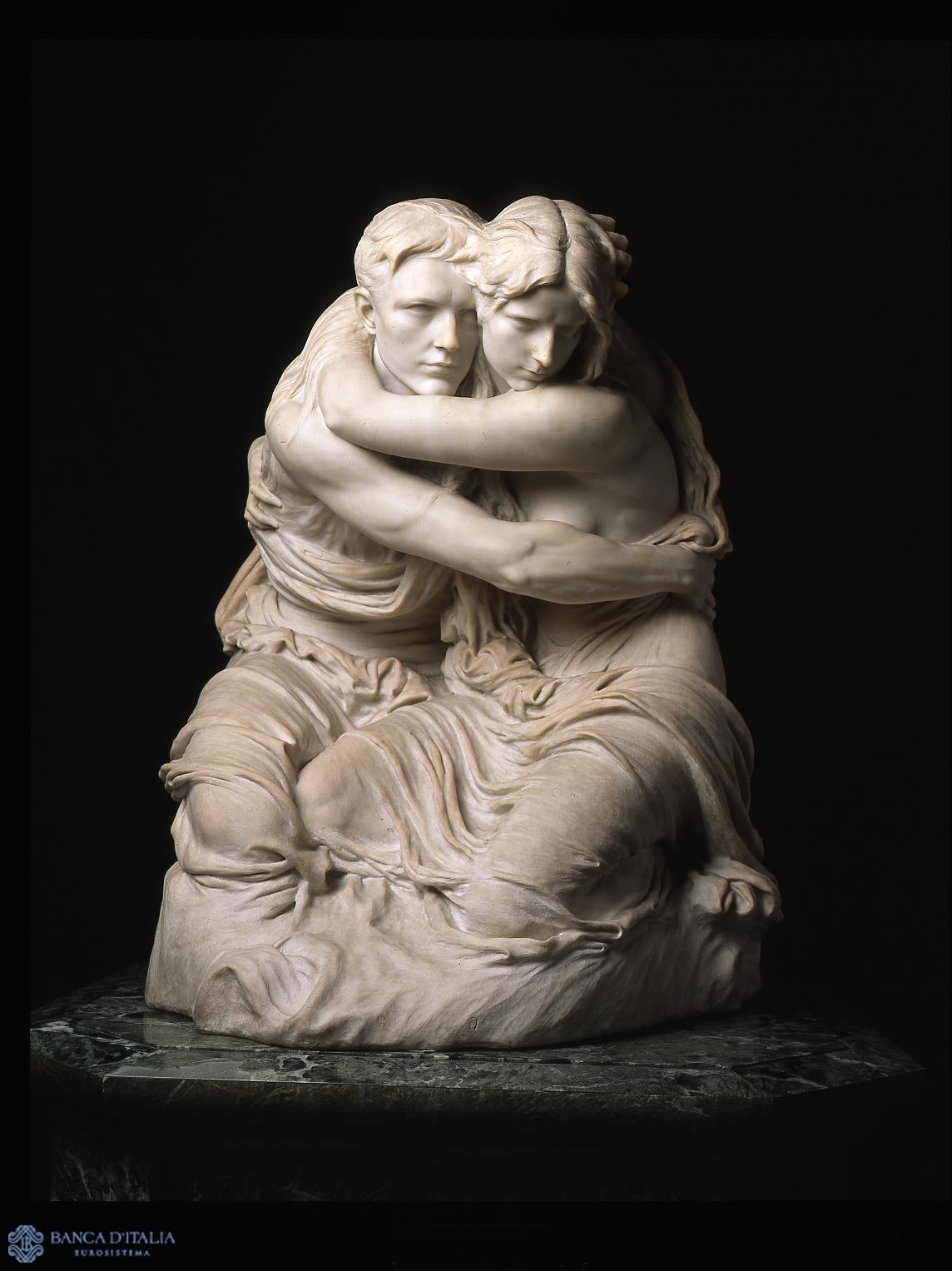Pietro Canonica was born in Turin in 1869 and died in Rome in 1959. He was admitted to the Accademia Albertina in Turin at a very young age and he studied under the sculptor Tabacchi. In 1885, just sixteen years old, he opened his own studio. In the following years he spent time in Rome and Florence studying the Renaissance masters. In this period he also exhibited in some of the most important Italian exhibitions. In 1892, when he was already famous, he was invited to Rome to be a member of the Committee for the Monument to Vittorio Emanuele II, contributing a sketch. In 1908 he produced the large statue Tirreno which today stands at the foot of the steps leading up to the monument. As in other examples of allegory, such as Pudore and Veglia dell’Anima, he emphasizes the expressiveness of faces and gestures, displaying a particularly accomplished technique. Among the most well-known examples from a vast gallery of portraits, including personalities from the high society of the time, were those of the Doria princes. Canonica brought together his great talent as an academic sculptor and his strong interest in the conservation of the national artistic heritage. In 1909, he was invited to join the Consiglio Superiore delle Belle Arti (Fine Arts Council) and later appointed Senatore del Regno (Senator of the Realm) for high artistic merit. As a Senator, he often made legislative proposals to protect the country’s artistic heritage. In 1910 he was offered the Chair of Sculpture at the Venice Academy of Fine Arts and then the Chair in Rome where he moved permanently in 1922 at the invitation of Corrado Ricci. In 1926 he pledged his works to the City of Rome and was allowed to live in the Fortezzuola in Villa Borghese, which he restored and which then became home to the Museum named after him.
Pietro Canonica
Pietro Canonica (Turin 1869 - Rome 1959)
20th century AD


